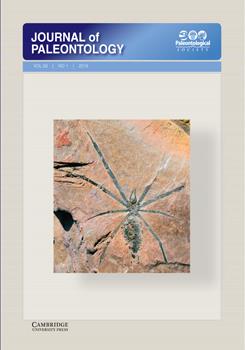Sertulaster keslingi new genus new species (Palaeasteridae) and Delicaster hotchkissi new species (Permasteridae) are asteroid echinoderms described, respectively, from the Ordovician and Carboniferous of eastern North America. The new genus and species help to document diversity within taxa of lower rank. S. keslingi is similar to the Early Ordovician EriasterBlake and Guensburg, 2005 but exhibits less differentiation of the skeletal elements from beyond the ambulacral column, that of the so-called extraxial skeleton, whereas the comparatively robust construction of Delicaster hotchkissi clearly departs from that of the type species, D. enigmaticus (Kesling, 1967). Small sample sizes and incomplete exposure of available specimens illustrate ambiguities typically encountered in the study of fossil asteroids.
How to translate text using browser tools
27 February 2019
Two new Paleozoic Asteroidea (Echinodermata) and their taxonomic and evolutionary significance
Daniel B. Blake,
Joseph Koniecki
ACCESS THE FULL ARTICLE

Journal of Paleontology
Vol. 93 • No. 1
January 2019
Vol. 93 • No. 1
January 2019




